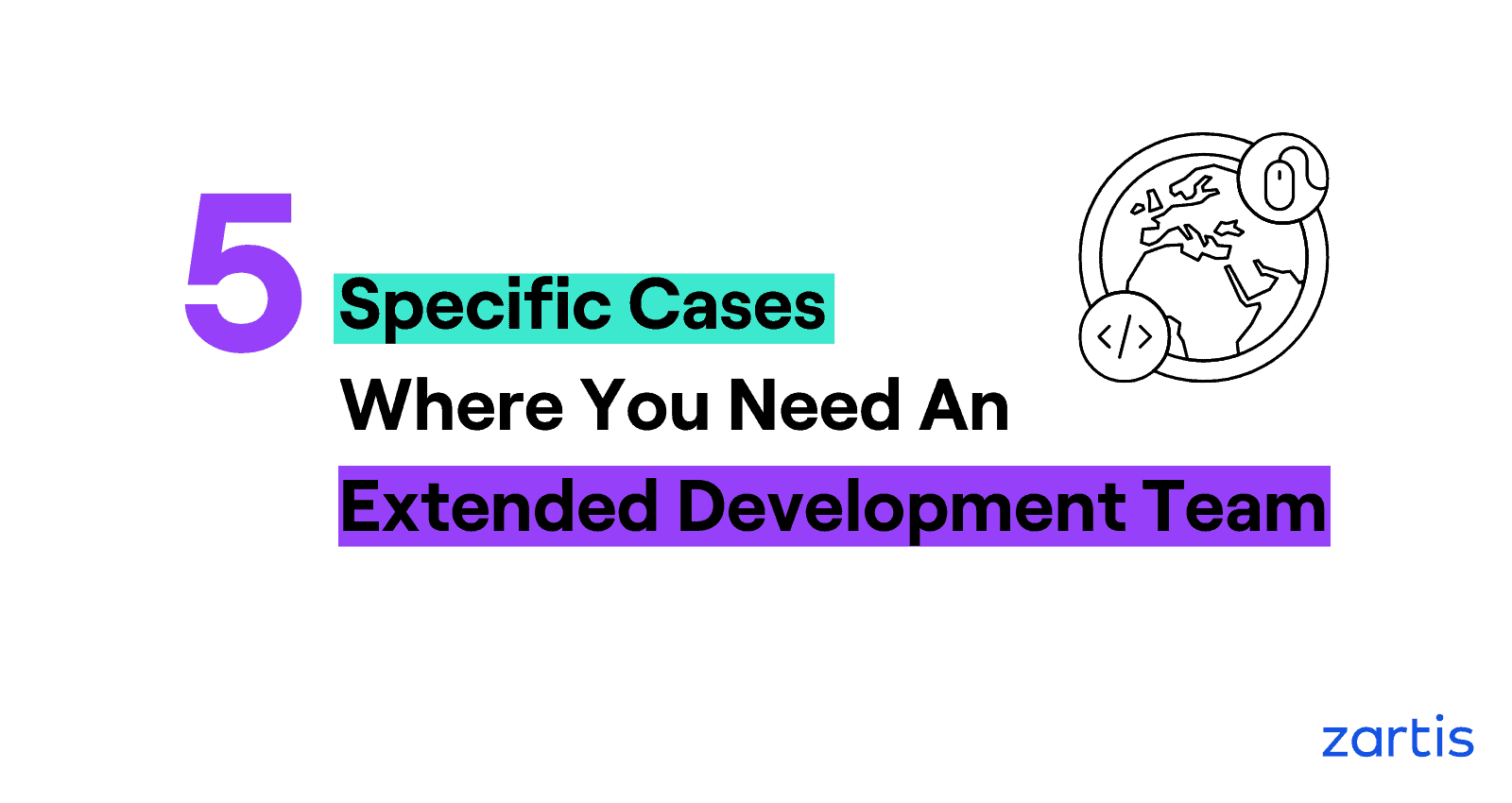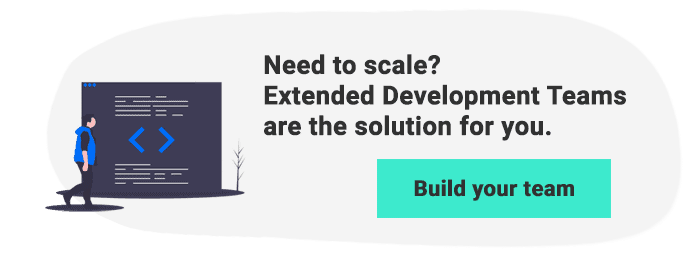“What is an extended team?”
“Why should I hire an extended development team?”
At Zartis, we get these types of questions a lot.
Let’s unpack the first one real quick. An extended development team is a group of remote software engineers that work closely in collaboration with your in-house developers. Think of it as a seamless extension of your core staff. Some of the hallmarks of the extended development model are common project goals, open communication, and high levels of mutual trust.
As for the second question above, the benefits of extended development teams are manifold. From cutting back on costs to filling skill gaps in your in-house team and faster time-to-market, remote engineers can bring a lot to the table. That said, though, the extended team model is not a one-size-fits-all solution. In fact, you might be much better off simply increasing your core staff or offshoring software development instead. It all depends on your budget, project requirements, and company goals.
But that begs a third question: when do you need an extended software development team? What are the indications that additional remote specialists would make a good fit for your company? How do you know when to use extended development teams — and when not to?
To help you out, we made a list of the five most common telltale signs you could really use an extended software development team.
5 Specific Cases Where You Need an Extended Development Team
-
You Are in a Time Crunch
Remember that time when you were in a desperate rush to deliver an important project? All software developers on your core team were working at full capacity, and yet you were not making enough progress despite having all hands on deck and the looming deadline. Well, that was a perfect opportunity to get a team extension if there ever was one.
An extended team can be a real godsend when you are pressed for time. Your in-house staff gets to take a much-needed breather, and the project benefits from a broader mix of skills. What’s more, the resulting time savings can make all the difference between a fast time-to-market and failing to meet the deadline.
And the best part is that this solution is incredibly flexible. Once the project is completed, you can quickly and easily scale your extended team up or down depending on your ongoing needs.
-
Your Core Team Lacks Expertise for a Specific Project
Imagine this: you are working on an important project, but your dedicated developers don’t have all the necessary skills. Perhaps you are looking to migrate a monolith legacy system to a modern microservices cloud-based architecture. Or maybe you are modernizing your frontend to create SPAs. In any case, your in-house team just doesn’t have all that it takes to get the job done.
What should you do?
The solution is obvious: bring in an additional team with more profound expertise to help with the task at hand.
The trick here is to have a clear role definition and ensure a fair and appropriate allocation of software development tasks between team members. Do that, and you will have yourself a real dream team for your project — and you can bet your in-house employees will be in for quite a learning curve. The extended engineers will not only help you achieve your goals but will also work closely with your existing team, transferring their skills and expertise.
-
It Is Not Possible to Hire In-House Developers
There are plenty of situations where recruiting software developers in-house might be difficult or downright impossible.
For one, there may be a lack of qualified engineers in your area. The talent pool — especially when it comes to highly sought-after skill sets — can be rather small, and the market is extremely competitive. Alternatively, local developers may be a tad too pricey for your budget.
Secondly, the recruitment process itself can also be a deterrent. Hiring, onboarding, and managing teams in-house require considerable resources and operational hassle. Not all companies have that kind of HR and administrative capacity.
And then there is the bureaucracy to consider. In Germany, for instance, hiring software engineers in-house can take as long as three to six months due to the mandatory notice periods.
In cases such as these, an extended development team can give you the talent you need at a fraction of the price, time, and hassle it would take to hire people in-house.
-
You Want to Lower Risk and Increase Flexibility
As much as you value your full-time employees, you have to admit they come at a high cost. Permanent contracts require a significant monetary and time commitment, which can be difficult to make in an unpredictable market. You may very well need engineers now for a particular project, but who knows what the future holds twelve months or two years from now?
Here is where extended software development comes in. Remote engineers come with minimal risk and unparalleled flexibility. You can scale your team up or down when and as you need. But more importantly, with appropriate onboarding and internal processes in place, an extended team will turn into a seamless addition to your in-house developers: fully integrated into the company and 100% dedicated to your projects.
-
You Are Mindful of Your Budget
Whether you are working on a tight budget, need to make some cuts to meet the bottom line, or simply want to optimize your expenses as much as possible, the extended team model can help a great deal. Of course, that largely depends on where your business is based, but for clients in the UK, Ireland, the US, or Germany, hiring an extended team in places such as Spain, Poland, or Portugal is significantly cheaper than recruiting people in-house or searching for local talent.
How We Set Up Extended Teams in Zartis
At Zartis, we specialize in putting together world-class extended teams from our European software development centers in Spain, Poland, and Portugal. We work with clients in the US, the UK, Ireland, Germany, and beyond.
Here is how our simple, three-step process works.
Step #1. Challenge
First, you tell us what you need. You let us know what your goals are and what budget you are working with, and we meet you right where you are — and help you get where you want to end up.
Step #2. Action Plan
Next, we draw your personalized action plan, factoring in all aspects of your business and the specific software project you are working on.
Step #3. Success
Finally, we pair you with the best extended developers for your needs that will get the job done. We can also help you with the project timeline and ongoing management. If you are interested in exploring retainer options, we would be happy to assist with that too.
Want to Get Your Own Extended Development Team?
Contact us today. Our experts will get back in touch shortly to discuss how Zartis can help you assemble a high-performing extended team and take your business to the next level.






